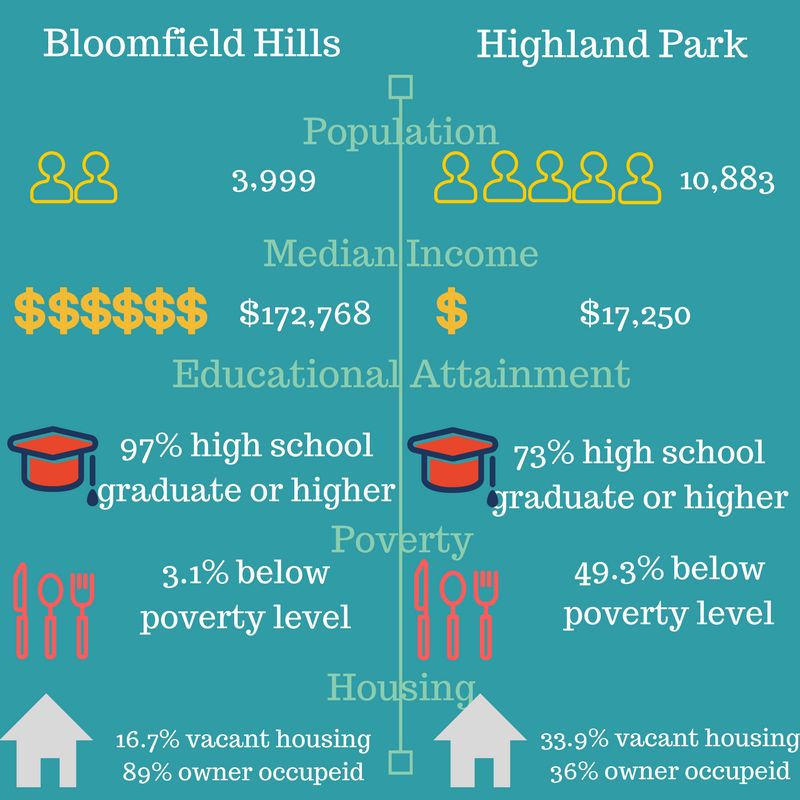As we’ve been highlighting over the last several weeks in a series of posts focused on median income, poverty levels, housing and educational attainment, it is no longer just the traditionally economically depressed communities that are still feeling the effects of the Great Recession. From the rural communities on the outskirts of the region to the middle-class communities that make up much of Southeastern Michigan, economic recovery has been slow. Of course, some communities continue to fare worse than others throughout the region, and in Southeastern Michigan one community that has suffered a great deal is Highland Park. With a median income of $17,250, an 11 percent increase in the adult poverty level since 2000 and a 36 percent homeownership rate, Highland Park remains one of the most, if not the most, economically depressed community in the state. And, just 20 miles north is the City of Bloomfield Hills, where the median income is nearly 10 times that of Highland Park, the percentage of adults in poverty is about 15 times less, and the homeownership rate is at about 90 percent. The community comparison shown above is simply another visual of the class segregation that exists throughout the region. Despite such a short geographical distance existing between these two communities the socioeconomic differences could not make them seem any farther apart. These vast differences can be, at least in part, attributed to decades of policy decisions that have affected flight from the region’s hub(Detroit and its inner-ring suburbs), homeownership, economic growth, stable education systems, proposed public transportation systems and the lack of effective government responses and collaborations.
**All data in the infographic is from the 2015 American Community Survey**
